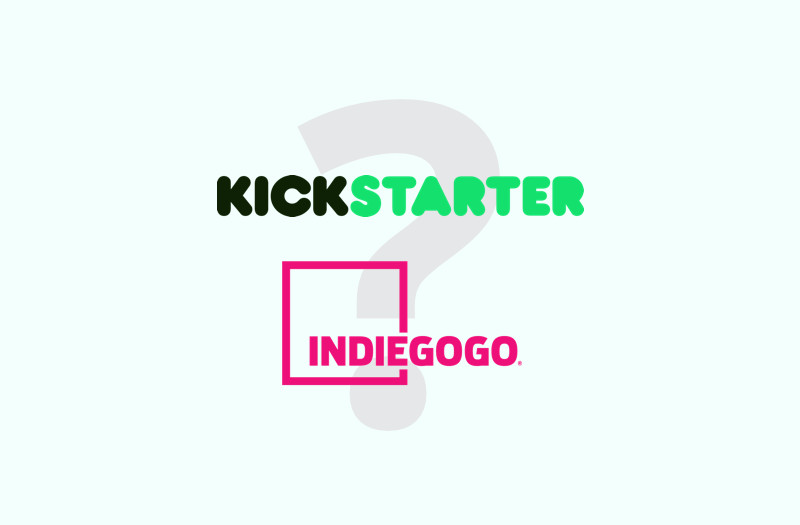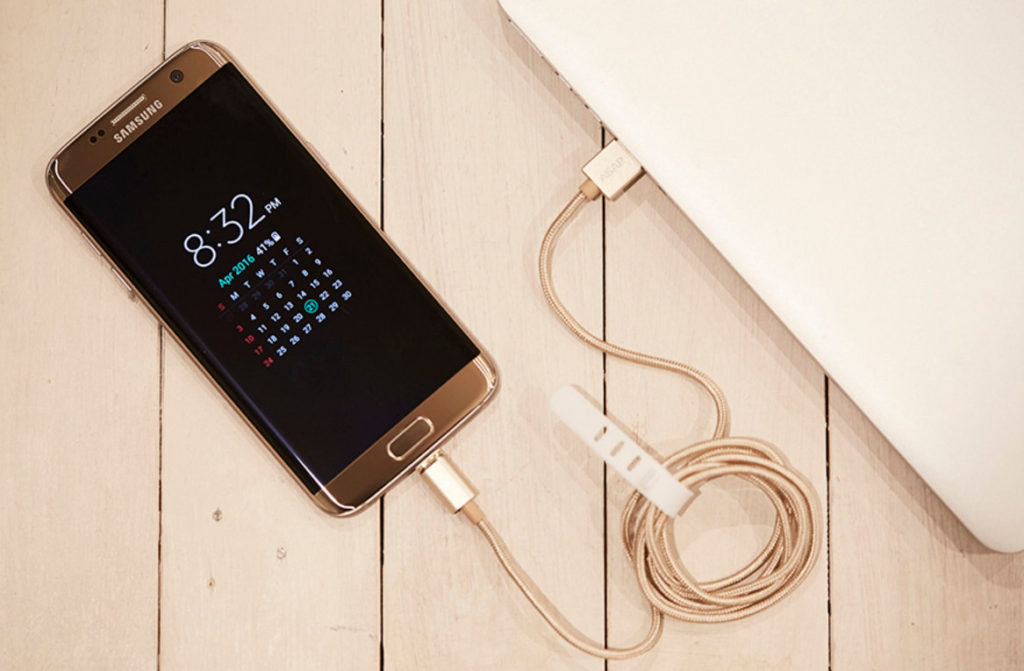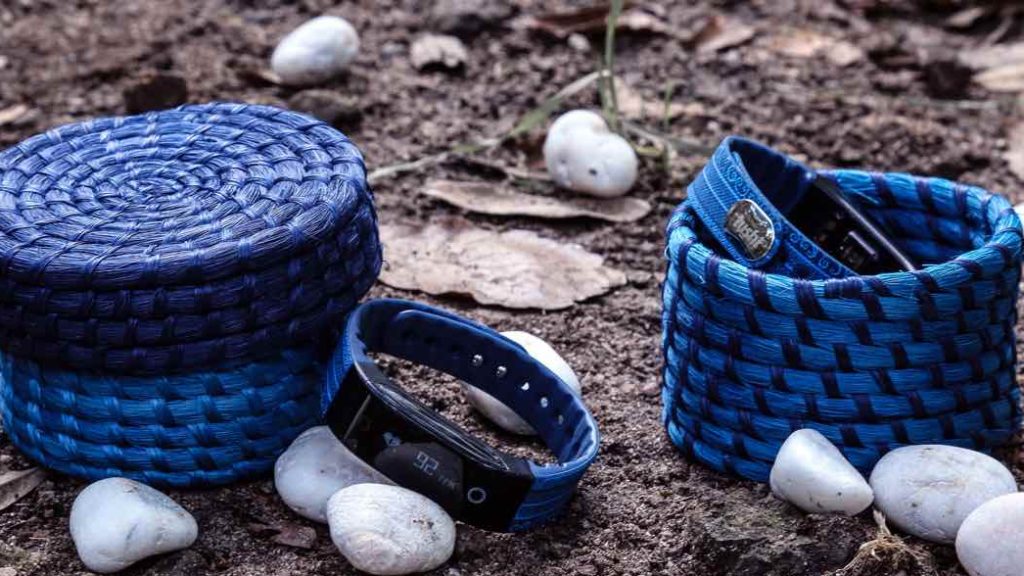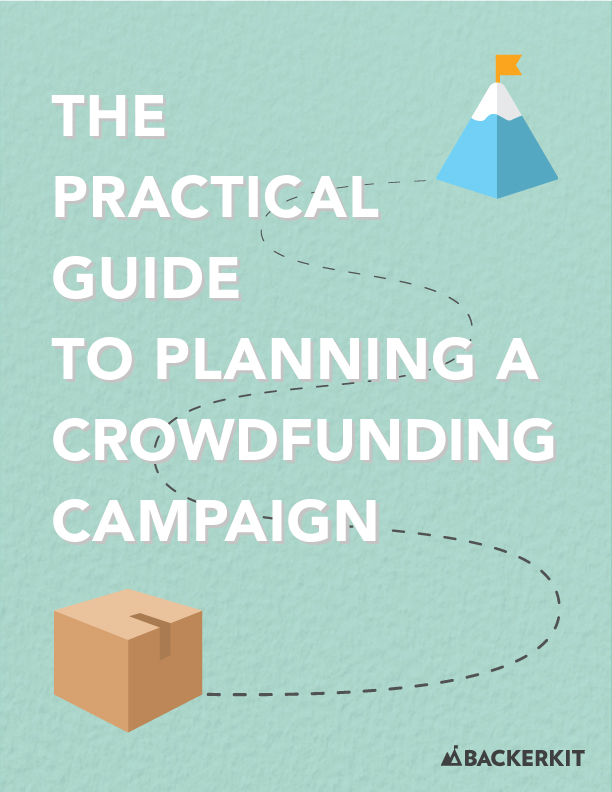
Kickstarter and Indiegogo are the two most popular rewards-based crowdfunding platforms. Each has a unique set of strengths: Indiegogo, for instance, has less stringent project requirements, while Kickstarter has a much larger backer community. There are also key differences in the funding models offered by each platform to creators. So, Kickstarter vs Indiegogo — how do you know which crowdfunding platform is right for your project?
The following factors will inform your decision:
- Platform rules and requirements
- Platform fees
- Funding models
- Project categories and popularity
Kickstarter: Who can use it?
The type of project you create can determine which platform you choose for your crowdfunding campaign. Kickstarter has a definitive guide to the types of projects it allows on its site. To date, some $5 billion has been pledged on Kickstarter. It welcomes projects that fit into the following categories: art, comics, crafts, dance, design, fashion, film & video, food, games, journalism, music, photography, publishing, technology, and theater. (Note: it can’t be used for charitable or political fundraising.)
Kickstarter prohibits projects that are “illegal, heavily regulated, or potentially dangerous for backers, as well as rewards that the creator did not make.” Prohibited rewards include items such as alcohol, energy food and drinks, weapons, and goods that have been resold from elsewhere. Any projects that are deemed unoriginal or not made by the creator could be suspended.
Kickstarter is open to backers all over the world, but limits project creation to select countries. As of January 2021, this list includes the US, UK, Canada, Australia, New Zealand, the Netherlands, Denmark, Ireland, Norway, Sweden, Germany, France, Spain, Italy, Austria, Belgium, Switzerland, Luxembourg, Hong Kong, Singapore, Mexico, Japan, Poland, Greece, and Slovenia. More information on eligibility requirements can be found in Kickstarter’s FAQs section.
Kickstarter’s partnership with Stripe integrates the payments process into the crowdfunding platform, making the experience simpler and more seamless for creators and backers — there’s no need to log in to a separate service. Currently, Stripe can be used by creators in 42 countries.
Prospective Kickstarter projects are subject to a thorough review process undertaken by Kickstarter’s staff before they are given the green light. This filtering may seem off-putting to some creators, but the rigorous standards serve as a guarantee of project quality and credibility for backers.
Kickstarter also requires creators to have a functional prototype for any tangible products on offer. Again, this might seem like more preparation for creators, but it can also work to their advantage, demonstrating their trustworthiness and commitment to delivering on their campaign promises.
Campaigns on Kickstarter can last between one and 60 days, but the company’s stats suggest 30-day campaigns are more likely to hit the funding sweet spot. There are some psychological reasons for running a shorter campaign: it helps to create feelings of urgency and scarcity, which act as psychological motivators for backers to donate quickly to avoid missing out.
All or nothing
All projects on Kickstarter adhere to an “all or nothing” funding model. If a project creator fails to meet the funding goal by the end of the crowdfunding campaign period, the creator will not receive any funds. This allows backers to pledge with confidence because they know that they will only be charged if the campaign meets its funding goal.
Backers and creators alike view Kickstarter as the flagship crowdfunding platform. Its brand recognition is unparalleled — Kickstarter is estimated to get over 46 million monthly visitors while Indiegogo gets 10 million monthly visitors Many first-time creators have contributed to Kickstarter campaigns in the past, which means they are already familiar with the platform.
In 2019, Kickstarter brought in $1.06 billion in the design category and $827.82 million in the technology category.

Arthur Maitre, e-commerce manager of product design company Native Union, says he had contributed to Kickstarter campaigns long before he started working at Native Union. He was drawn to the platform because of its dynamic community and saw it as a natural fit for Native Union’s JUMP and ECLIPSE cable campaigns. “The community on Kickstarter tends to be a little more vocal,” he says. “There’s a lot more communication, and we really enjoy that about the crowdfunding process.”
Maitre says the priority for both campaigns was to have a strong showing in the first 24 hours. “The more momentum your campaign gets early on, the better it is for the popularity ranking, the press coverage, and everything that follows.”
Redwine adds that many famous brands started on Kickstarter: “Kickstarter is the most respected and trusted funding platform. If you are working to build a trusted brand, the brands you associate with matter. Kickstarter is proud to have helped companies like Oculus and Form Labs bring their first products to life, and to be an ongoing part in the journeys of companies like 3Doodler, Lomography, Moment, and Spark.”
Indiegogo: An open platform
Indiegogo is a longtime leader in the crowdfunding space, enabling entrepreneurs to bring their unique ideas to life. After a campaign is funded, a whole new set of challenges emerge. From managing mountains of backer data to ensuring rewards get to the right places on time, the fulfillment stage can be complex. Indiegogo knows better than most how complicated this part of a creator’s journey can be, which is why we’ve teamed up as Indiegogo’s exclusive pledge management partner.
Like Kickstarter, prospective creators on Indiegogo must first ensure their crowdfunding campaign satisfies the company’s terms of use. Indiegogo features projects in categories spanning tech, film, design, animals, community, environment, health, politics, religion, small business, and sports, to name a few. Indiegogo was first designed as a platform to raise money for film and entertainment products. It continues to be a powerhouse in these categories, as well as for technology products.
Indiegogo offers support to creators in the US, UK, Canada, Australia, Hong Kong (China campaigns may be eligible), Austria, Belgium, Denmark, Germany, Finland, France, Republic of Ireland, Italy, Luxembourg, Netherlands, Norway, Portugal, Singapore, Spain, Sweden, Japan, or Switzerland.
Indiegogo has a partnership with Stripe. All currencies that are supported by Indiegogo use Stripe to process contributions and disburse funds. If your currency is not supported, Indiegogo recommends that you consult with an expert or use Stripe Atlas to create a U.S. business entity and apply for a U.S. bank account.
Indiegogo does not require creators to have a working prototype before their campaign launch, offers a choice between ‘all or nothing’ or flexible funding models, and has a less stringent vetting process for prospective creators.

Vinson Leow, founder of ASAP Technologies, is a passionate advocate of Indiegogo for crowdfunding campaigns. Leow says the Gogofactor — Indiegogo’s algorithm for selecting projects to feature in its newsletter — gives crowdfunding campaigns a great publicity boost. “They will feature you in their newsletter if you hit certain targets,” he said. “I’ve found that to be incredibly beneficial — it’s resulted in an increase of anywhere between 10,000 and 50,000 extra visits to our campaign page.” The Gogofactor also affects search rankings and inclusion in press outreach.
Flexible Funding: Pros and cons
Indiegogo’s biggest point of difference from Kickstarter is the flexibility it offers in funding models. Creators can adopt a conventional ‘all or nothing’ approach or choose to ‘keep it all’, which means they can retain any funds raised even if the crowdfunding campaign falls short of its target.
Arturo Arvizu, creator of the TushiPal, says when taking a look at the features of Kickstarter vs Indiegogo, flexible funding made sense for his product launch, which is both a tech product and social enterprise designed to empower Mayan artisans and create jobs for artists. He says Indiegogo’s function as an “open platform for social products” seemed the perfect fit.

The appeal of flexible funding is obvious for creators, but carries additional risks for backers, who are typically more willing to fund all-or-nothing projects because they know they won’t be charged if the campaign fails to meet its funding goal. (Creators should bear in mind that if they cannot deliver their project with the capital they have raised, they have a moral duty to refund their backers.)
This sentiment is borne out by a study that suggests all-or-nothing models “offer a guarantee to the crowd that the entrepreneur does not start a project with unrealistically low funding.” The success of all-or-nothing models may be due to the phenomenon of ‘social proof’: the more backers a project acquires, the more credibility it establishes — a popular campaign signifies a greater likelihood of success.
This mixture of flexible funding and all-or-nothing models make it harder to calculate the Indiegogo success rate. The platform also doesn’t publish its key metrics publicly. However, it is worth noting that fewer of the most-funded crowdfunding projects of all time were launched on Indiegogo and the Kickstarter success rate is around 38%.
InDemand
Sometimes it makes sense for creators to leverage the advantages of both platforms for a campaign — they might raise funds for their crowdfunding campaign through Kickstarter and raise additional money through Indiegogo InDemand once the campaign has ended.
Indiegogo’s InDemand allows creators to raise funds after their initial crowdfunding campaign has concluded. There’s no fundraising target or deadlines, so your post-campaign fundraising can last for as long as you like.
Maitre says “there was still quite a bit of interest” for the products in the hours and days after the Kickstarter campaigns had finished. The Native Union website saw a huge spike in traffic in the last two hours of the campaign, and received many emails from people who had missed out on contributing while the Kickstarter was still live.
“We needed a platform for people to be able to pre-order the ECLIPSE so they’re the second group of people to get it after the Kickstarter backers and before the product goes to market,” Maitre says. So, the company chose to use Indiegogo’s InDemand, which allows creators to raise money for an indefinite period once a crowdfunding campaign has run its course.
Secret perks
Indiegogo allows you to have secret perks — that is, rewards you can only access via direct link. Creators often use these for promotions, to thank loyal backers, or as a way to offer discounts (since discount codes are not available through Indiegogo). You could also use secret perks to boost the momentum of your campaign mid-campaign. While you can certainly figure out ways to incentivize backers on Kickstarter — through stretch goals, for instance — you won’t have the option to create secret perks within the platform.
Another way to build your email list
Both Kickstarter and Indiegogo make it possible for creators to generate interest in their upcoming campaigns through pre-launch pages. However, Indiegogo allows you to capture email addresses from potential backers while Kickstarter doesn’t.
Platform fees and payments
Kickstarter and Indiegogo share a similar fee structure. At Indiegogo, creators on a flexible funding model must pay a platform fee of 5% of total funds raised, irrespective of whether the campaign funding goal is reached. Creators that don’t meet their funding target and have a fixed funding model pay no fees, as all money is returned to backers. Then there are third-party fees associated with processing credit card payments, wire fees, and transfer costs. Stripe charges a processing fee that varies according to your location and currency.
There are also additional platform fees for InDemand. Creators who ran their initial campaign on Indiegogo pay 5%. Those who ran campaigns on other platforms pay 8%.
Meanwhile, Kickstarter’s fees may change depending on the location of your company. For example, creators in the United States pay a 5% platform fee and between 3% and 5% in payment processing charges plus $0.20 per pledge. In Singapore, for example, creators pay 5% of their total funds raised and processing fees of 4% plus $S0.30 per pledge. Head over to Kickstarter’s fee page to see each country’s fee structure.
One thing to note: Indiegogo backer contributions will be charged to their credit cards immediately whereas Kickstarter contributions are charged at the end of the campaign.
Category strengths
Another major differentiator to research is the strength of the community for your particular project category on each platform. If you have ‘hero’ projects similar to yours that you want to emulate, pay close attention to the platform that they use.
Games, technology, and design projects receive the lion’s share of funding on Kickstarter, although the platform has also proved popular for film and video, music and publishing projects. The most funded projects on Kickstarter span numerous categories: they include the Pebble smartwatch, card game Exploding Kittens, the Baubax travel jacket, and a reboot of Mystery Science Theater 3000, to name a few.
Kickstarter supplies a breakdown of funding for each category on its website.
Indiegogo’s strengths are in technology and design products, mass manufacturing, and charitable causes. More information about its success stories can be found here.
Beyond Kickstarter vs Indiegogo: Choosing a platform is just the beginning
While it’s important to understand the difference between Kickstarter and Indiegogo, it’s just as important to understand the limitations of both. When you prepare for your campaign, you’ll discover that reaching your funding goal is only part of your journey. Your crowdfunding to-do list will include everything from community-building to getting your product manufactured to processing fulfillment. Fortunately, there is a whole ecosystem of tools and services beyond Kickstarter and Indiegogo that can help you hit your funding goal or streamline the work that you’ll have to do when it’s time to produce and ship your rewards.
To get a sense of what it will take to run a campaign from launching your project to fulfillment, ask yourself the following questions:
How will you market your campaign?
Taking a grassroots approach to spreading the word about your campaign can work. Building up your social media presence, networking at events, and sending pre-launch messages through email marketing should all be a part of your marketing strategy. But there are also paid marketing tools that can give you an extra boost, and may be worth the investment if you’re running a larger campaign. Facebook Ads, targeting audiences who are likely to be interested in your product, can help drive more pledges to your campaign. You may want to consider hiring a marketing service to help you run ads.
BackerKit Marketing is a cost-effective ad option that puts your project in front of more than 1,000,000 qualified backers that are interested in projects like yours. Projects like Frosthaven and Return to Dark Tower have worked with BackerKit on marketing their campaigns. And if you choose to use BackerKit, you can also be included in the BackerKit Newsletter, which works on a commission basis — so, there’s no upfront cost — and shares your project with a list of 500,000 opted-in backers.
Who can manufacture your product?
You have a lot of options open to you here, so finding the right partner can be a challenge. As you start your search, consider scalability (the manufacturer should be able to adjust your production run if you surpass your funding goal), location (costs associated with domestic and international manufacturers can be drastically different), and whether or not the manufacturer has worked on projects like yours (they may have existing molds that can be reused for your project at a reduced cost).
How will you collect and manage backer information?
After your project is successfully funded, you’ll have to deliver rewards to your backers. To do this, you’ll first need to send out surveys to collect backers’ shipping information along with their item choices. Kickstarter has a survey tool and Indiegogo has Perk Item Options to collect the information you’ll need for fulfillment. But you should do research into whether these features are robust enough for your needs.
Most creators find that a pledge manager makes life easier when it’s time to collect and manage backer information, and prepare for fulfillment. You don’t want to wade through spreadsheet after spreadsheet of backer data, which is likely to happen if you stick with the basic survey tools on Kickstarter or Indiegogo. A pledge manager like BackerKit ensures that the data you collect during the survey is accurate and searchable. Used by top Indiegogo and Kickstarter projects like KAISR Original: The Ultimate Inflatable Air Lounge and Peak Design’s Travel Tripod, BackerKit Pledge Manager also has address validation, which helps with shipping and saves you time and money.
Will your project have a lot of individual items and options for backers? If so, consider a pledge manager. With BackerKit, you can itemize stock keeping units (SKUs) — the unique identifier assigned to each item you provide backers. BackerKit’s support team is full of experts that can help you set up items and help you through the post-campaign phase. On top of all of this, you can use a pledge manager to raise additional funds through add-ons and pre-orders.
How will you ship your product?
Depending on the size of your project, how many item choices you have, and the number of people on your team, you may be able to handle shipping on your own. But when that isn’t an option, you’ll need to contact a Third-Party Logistics (3PL) provider that will handle warehousing, distribution and fulfillment. Another benefit of using BackerKit Pledge Manager is that it has integrations with popular 3PLs such as Easyship, Amplifier, and Shopify, making it easier to process orders.
As you’re weighing the benefits of Indiegogo vs Kickstarter, you should also be identifying the partners that can help you fulfill these essential tasks. Whether you’re a first-time or seasoned creator, you should use the tools and services that will enable you to get the most out of your campaign and maximize your time, so you can enjoy your crowdfunding experience.
To learn more about how BackerKit can help you along your crowdfunding journey, please reach out to our team.
Takeaways
- Understand the listing requirements for each platform.
- Verify that the payment processing service for each platform is available in your country.
- Select the platform that works best for you.

